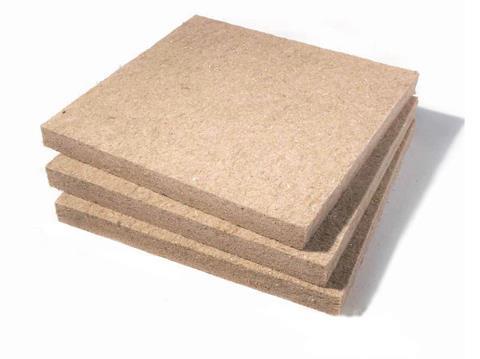Hemp’s notorious reputation appears to be slipping, alongside its rise in popularity within the industry. Matthew Belcher clears up the misconceptions

Hemp has been breaking out in construction over the past decade but misguided attitudes, costs and regulations have stood in the way of showcasing its benefits. We ask the founder of Hemspan, Matthew Belcher, some pressing questions on the material…
How would you describe hemp to someone that’s never used the material before?
Hemp is a fast-growing carbon sink of a plant and despite misconceptions, it can offer great benefits in terms of environmental impact and human wellbeing. Perhaps the most contentious bast fibre in Europe, hemp offers more significant aid to agroecological systems than flax.
Tell us about the history behind hemp and some of the misconceptions surrounding the material.
Under Henry VIII, hemp was announced by royal decree to be a valuable economic resource. As such it was compulsory to grow hemp in 1533 and farmers produced a quarter acre of hemp or flax for every 60 acres of land. To know this was followed by an era of hemp stigma and prohibition is hard to believe.
Over the last decade, there has been a huge resurgence of interest in the material. However, there still remains a massive disparity between producers and companies, due to hemp’s classification as a drug and the extra regulation growers face when attempting to start production.
How is the stigma around hemp changing?
Hemp’s notorious reputation appears to be slipping away and it now appears to hold more leverage than ever. There are countless examples of hemp’s sturdiness in action. From textiles, car parts and insulation to food supplements and regenerative farming, hemp’s value is only increasing.
The material’s rise is particularly prevalent in construction, offering alternatives to carbon-intensive materials such as plastic and concrete. A key component in the race to net zero.
There has been a lot of noise about hemp over recent years and the stigma is lifting alongside the realisation of the benefits hemp has not just to the product market but also to human health.

Is hemp good for your health?
Hemp improves comfort, health and the environment’s wellbeing. Wearing hemp material reduces the chance of falling ill from bacterial and microbial infection as it contains cannabinoids. Not only does hemp release fewer harmful particles, but it also releases fewer micro-particles altogether.
What are some of the benefits (particularly in regard to sustainability) of using hemp?
Hemp plants have a larger root structure and essentially lock carbon into the soil. The biomass created in a single growing year is much greater than that of an alternative crop. In fact, hemp captures on average 4x more carbon dioxide than trees per acre.
It is also less soil exhaustive, meaning it can be placed more frequently in a crop rotation. Its deep-rooted structure invigorates the soil and reduces parasites which means fewer pesticides and fertilisers are required - giving it huge potential for farmers.
Hemp takes four months to reach maturity, compared with 20-80 years for a tree. In theory, solving supply chain issues that come with the often energy and labour-intensive alternatives. It is also fully recyclable at the end of its life.
With 60-70% of soils in the European Union degraded as a result of unsustainable management practices, it’s evident that this crop could play a role in the land regeneration process.
What about durability, how long will hemp building systems typically last?
For centuries it was the primary material for rope and sails in the shipping industry, tents for militaries and paper. Today, hemp fabric makes for strong upholstery and offers excellent UV resistance. Hemp’s durability protects from decolouration and disintegration.
It’s not a food source for pests but like most materials, if they can access it, they will chew it for bedding. It’s the same for stone wool and PIR board. It’s just important to make sure that pests don’t have access.
Continued use in construction, however, is determined by maintenance. A building with a properly maintained facade will last forever.

How does hemp perform with regard to fire?
Our hemp insulation has a Class E Fire Rating. However, it sits inside a wall that on the outside has a Class B Fire Rating product, meaning the panel cannot be penetrated.
What are some of the barriers to specifying hemp building systems?
Hemp has a large role to play in the construction industry achieving net zero. However, if we’re going to be on track to combat climate change, wider adoption is needed.
Hemp is a late spring crop that’s sensitive to frost. Once germinated and given enough water, it will grow extensively. But the issue is, it can be difficult to harvest. In order for it to be grown, farmers require specialist growing and harvesting technology and the infrastructure doesn’t yet exist in the UK. We’re currently growing and manufacturing hemp in Europe, which requires importing it to the UK.
Part of our strategy is to drive internal demand so at some point we can switch to home-grown hemp.
What is the cost of hemp in comparison to other popular building materials?
For hemp insulation, you pay a premium. Hemp wall insulation is twice the price in comparison to the equivalent mineral wool product, which is why we’re dependent on early adopters wanting to reduce the carbon footprint of their projects.
The use of hemp will be driven by the climate emergency and consumer behaviour. Energy costs are rising, which means products manufactured in an energy-intensive way will continue to rise in price. On the flip side, as demand for hemp increases and we reach mass production, the price of hemp will hopefully stabilise or fall.

Why is it important for the construction industry to embrace hemp?
The construction industry makes a significant contribution with regard to the UK’s carbon emissions. Natural materials are a way to lower that contribution.
Specifying hemp building systems can also improve safety on construction sites by allowing for more offsite production. Hemp systems aid in making indoor spaces more breathable and regulate temperatures efficiently but more importantly, it can help us beyond our homes.
The use of materials like hemp can engage us with farming practices, rejuvenate local biospheres and enable more carbon capture; these are significant points for natural materials. Without them, a net-zero home works alone.















No comments yet